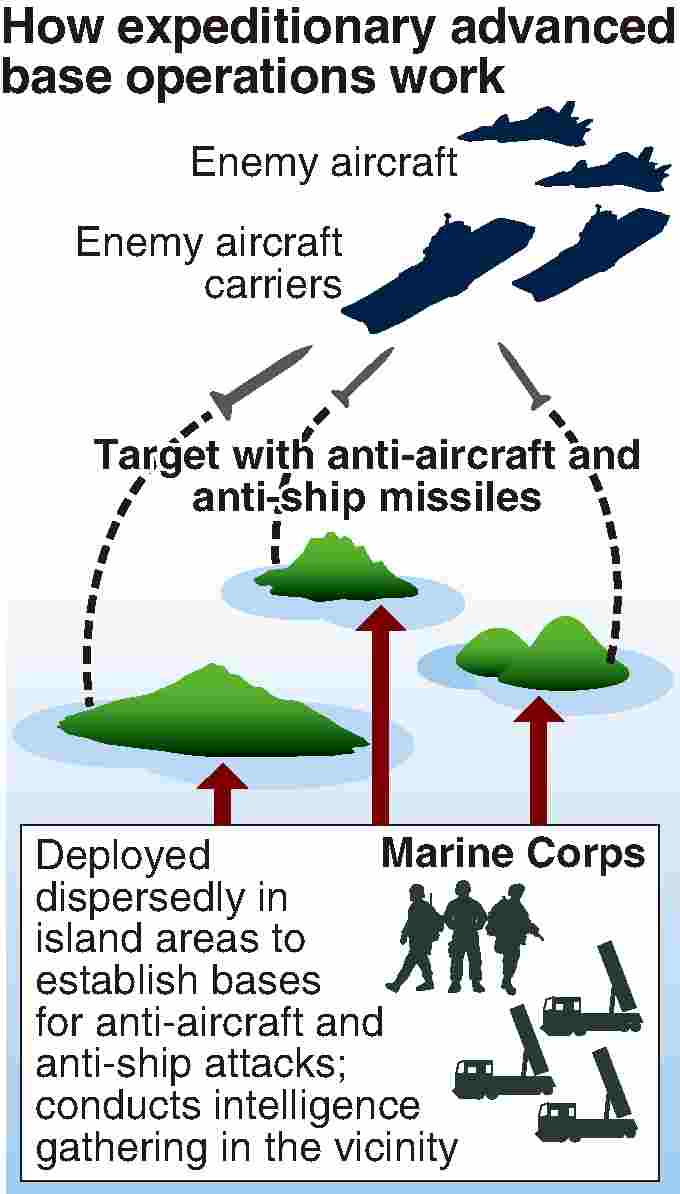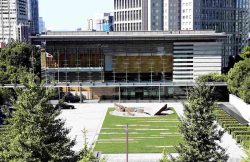Okinawa, 50 years after reversion / Commanding general: Reducing burden remains important; U.S. forces stationed to support defense of Japan

Lt. Gen. H. Stacy Clardy speaks during an interview with The Yomiuri Shimbun in Uruma, Okinawa Prefecture.
11:13 JST, July 17, 2022

This is the 10th and final installment of a series looking at various aspects of Okinawa today, 50 years after Tokyo and Washington agreed on its return to Japan. In this installment, The Yomiuri Shimbun interviews Lt. Gen. H. Stacy Clardy, Okinawa Area coordinator of United States Forces Japan, about issues involving U.S. military presence in the prefecture.
The Yomiuri Shimbun: Opposition to U.S. military bases still lingers in Okinawa Prefecture. What is the U.S. military doing to gain the understanding of the people in the prefecture?
Clardy: We have dialogues going all the time at the local base and station level with their communities.
We do everything in our power to ensure that they [communities] understand what we’re doing, and but also, as importantly, reducing the burden as much as possible, the impact on their families and lives.
Though, it is important to remember that we are here because of the [Japan-U.S. Security] treaty we have between our two countries. We’re here in support of the defense of Japan. And to do that, we have to continue to train and prepare for crisis or maybe even war. We think we’re the best in the world, and we want to continue to maintain the readiness of those forces that are here.
Every marine from the individual young marine to the general officer in charge respects the sovereignty of the government of Japan and the people’s desires here in Okinawa …we want to be good neighbors.
For me personally, I’ve had four tours here in Okinawa, going back to 1987. I’ve had daughters who in a lot of ways grew up here. We consider this a home away from home. I think that’s true for a lot of marines who serve here with their families.
Q: In the talks on the realignment of U.S. forces in Japan, the Japanese and U.S. governments have agreed to begin transferring 9,000 marines currently stationed in the prefecture to mainly Guam in the early 2020s. What is the outlook for the plan?
A: The defense policy review initiative is an agreement, just like the treaty is, between our two countries … It’s our goal to fulfill that agreement. It is ongoing … We will meet these obligations that are identified in this agreement.
Q: There is strong opposition to the planned relocation of the U.S. Marine Corps’ Futenma Air Station in Ginowan to the Henoko district in Nago, both in the prefecture.
A: We want people to feel comfortable that they can protest … but we want that to be peaceful protests as well. It is part of a democracy.
The air station is critical to our operations, it is critical to our training. The Futenma replacement facility is a solution to relocate MCAS Futenma. Both countries have agreed and are committed to that relocation.
It will allow for less burden on the population in the southern parts of the island by moving the air operations farther north. It meets the operational and training requirements that we have for the U.S. From a political perspective, it’s a more sustainable option than maintaining MCAS Futenma. But we’ll continue to operate on MCAS Futenma until the replacement facility is complete.
Q: What are the roles played by the U.S. forces in the prefecture?
A: We see this [the treaty] as a cornerstone for that security, stability and peace in the region. I think Japan and United States governments look at it very much that way as well. Also, we see the threats the same, we see the security environment the same. And we know we are stronger together than we are apart. We respect the sovereignty of other countries … We all want to recognize international law and follow that. Those commitments that we have together are an important part of why U.S. forces are here.
This [Okinawa] has always been a strategic location in this part of the world. Regardless of any point in history, whether it’s Japan or our allies, or potential adversaries, I think we all see it the same way.
Q: In recent years, the marines stationed in the prefecture have been increasingly engaged in training for expeditionary advanced base operations (EABO), showing some changes in their activities.
A: In the summer of 2019 … the commandant of the marine corps [Gen. David H. Berger] published his Commandant’s Planning Guidance. Within that, he identified that the marine corps needed to change.
This specifically focused a lot of attention on III MEF [Marine Expeditionary Force] as the main focus of effort for these efforts, as Indo PACOM [Pacific Command] is the priority theater, as what goes on here in the western Pacific is also the most important part of the Pacific.
III MEF is a force capable of conducting expeditionary advanced base operations, but is not solely an EABO force. The forward posture and high readiness of III MEF means that we can establish EABs [expeditionary advanced bases] at the time and place of our choosing. We conduct training so that we can maintain a high degree of operational readiness. This in turn enables us to be prepared to meet our obligations to the people of Japan under the U.S.-Japan Treaty of Mutual Cooperation and Security [commonly known as the Japan-U.S. Security Treaty]. That’s our mission, and that’s why we need realistic and bilateral training every day.
Lt. Gen. H. Stacy Clardy, commanding general of the III Marine Expeditionary Force
Clardy is a graduate of the University of South Carolina. After serving as commander general of the 3rd Marine Division and military deputy for the under secretary of defense for personnel and readiness, he was appointed commanding general of the III Marine Expeditionary Force, headquartered at Camp Courtney in Uruma, Okinawa Prefecture, in May 2019. He concurrently assumed the post of Okinawa Area coordinator of United States Forces Japan.
Expeditionary advanced base operation (EABO)
A strategy to deploy small units to areas that may be attacked by ballistic missiles among other arms and establish bases mainly for anti-aircraft and anti-ship attacks. It is aimed at dispersing and complicating the attack targets and blocking the advance of enemy naval vessels and aircraft. It is a joint operation of the U.S. Navy and Marine Corps.
With the threat posed by China in mind, U.S. forces simulate scenarios in the event of an emergency for deploying and establishing bases in the Nansei Islands, the island chain between Kyushu and Taiwan, and island areas in the South China Sea. It was introduced as a new operation in anticipation of a situation in which China’s naval buildup jeopardizes the U.S. maritime supremacy. It was also incorporated in the Commandant’s Planning Guidance that Gen. David H. Berger presented when he became the U.S. Marine Corps commandant in 2019.
"Politics" POPULAR ARTICLE
-

Japan to Support Central Asian Logistics Route That Bypasses Russia, Plan to Be Part of Upcoming Summit in Tokyo
-

Japan to Tighten Screening of Foreigners’ Residential Status by Providing Information of Nonpayment of Taxes
-

Chinese, Russian Bombers Flew Unusual Path by Heading Toward Tokyo; Move Likely Meant to Intimidate Japan
-

Japan Plans National Database to Track Foreign Ownership of Real Estate, Land as It Weighs New Rules
-

Up to 199,000 Deaths Estimated From Mega-Tsunami; Most Recent Occurrence Took Place in 17th Century
JN ACCESS RANKING
-

Keidanren Chairman Yoshinobu Tsutsui Visits Kashiwazaki-Kariwa Nuclear Power Plant; Inspects New Emergency Safety System
-

Tokyo Economic Security Forum to Hold Inaugural Meeting Amid Tense Global Environment
-

Imports of Rare Earths from China Facing Delays, May Be Caused by Deterioration of Japan-China Relations
-

University of Tokyo Professor Discusses Japanese Economic Security in Interview Ahead of Forum
-

Japan Pulls out of Vietnam Nuclear Project, Complicating Hanoi’s Power Plans
























